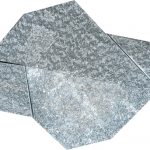Introduction (150 words)
Farmhouse cultured stone has become an increasingly popular choice for homeowners and designers seeking to infuse a rustic charm into their spaces. With https://www.fs-slate.com/ledgestone/ and durability, this versatile material offers a unique blend of natural aesthetics and modern convenience. In this article, we will delve into the world of farmhouse cultured stone, exploring its origins, characteristics, benefits, and applications. Whether you are looking to enhance the exterior of your home, create a cozy fireplace, or add a touch of warmth to your interior walls, farmhouse cultured stone provides endless possibilities.
1. The Origins of Farmhouse Cultured Stone (300 words)
The concept of farmhouse cultured stone can be traced back to centuries-old European architecture, where natural stone was commonly used to construct sturdy farmhouses. As time went on, the limitations of natural stone, such as weight and cost, led to the development of cultured stone as a viable alternative. Cultured stone, also known as manufactured stone veneer or faux stone, is a lightweight and cost-effective building material that replicates the look and feel of natural stone.
2. Characteristics of Farmhouse Cultured Stone (400 words)
Farmhouse cultured stone is crafted using a blend of Portland cement, lightweight aggregates, and iron oxide pigments. This combination allows manufacturers to create a wide range of textures and colors, mimicking the natural variations found in authentic stone. The manufacturing process involves casting the mixture in molds, which are then cured and finished to achieve the desired appearance. The resulting cultured stones are durable, weather-resistant, and virtually indistinguishable from natural stone.
3. Benefits of Farmhouse Cultured Stone (500 words)
Farmhouse cultured stone offers several advantages over natural stone and other building materials. Firstly, its lightweight nature makes it easier to handle and install, reducing labor costs and construction time. Unlike natural stone, which often requires additional structural support, cultured stone can be applied directly to most surfaces, including wood, concrete, and drywall.
Furthermore, farmhouse cultured stone is highly customizable, enabling homeowners and designers to achieve their desired aesthetic. With a vast array of colors, textures, and shapes available, it is possible to create a unique and personalized look. Additionally, cultured stone can be easily cut and shaped on-site, allowing for intricate designs and creative applications.
In terms of maintenance, farmhouse cultured stone requires minimal effort. Its non-porous surface prevents the growth of mold and mildew, and it can be cleaned with a simple mixture of water and mild detergent. Unlike natural stone, cultured stone is not susceptible to staining or fading, ensuring long-lasting beauty.
4. Applications of Farmhouse Cultured Stone (600 words)
Farmhouse cultured stone can be utilized in a wide range of applications, both indoors and outdoors. Let's explore some of the popular uses of this versatile material:
4.1 Exterior Applications
- Siding: Farmhouse cultured stone can be used to create stunning exterior facades, adding character and charm to any home. Whether applied to the entire exterior or used as an accent, the textured surface and natural colors of cultured stone create a warm and inviting ambiance.
- Retaining Walls: Cultured stone is an excellent choice for building durable and visually appealing retaining walls. Its lightweight nature reduces stress on the foundation, making it an ideal material for landscaping projects.
- Entryways and Columns: By incorporating farmhouse cultured stone into entryways and columns, homeowners can create a grand entrance that exudes timeless elegance. The natural beauty of the stone adds a touch of sophistication to any property.
4.2 Interior Applications

- Fireplaces: Installing farmhouse cultured stone around a fireplace can transform the focal point of a room. Whether creating a traditional or contemporary look, the texture and warmth of the stone enhance the cozy atmosphere.
- Accent Walls: Cultured stone accent walls are becoming increasingly popular in interior design. By incorporating this material into a living room, kitchen, or bedroom, homeowners can create a rustic and inviting ambiance.
- Kitchen Backsplashes: Farmhouse cultured stone adds a touch of authenticity and character to kitchen backsplashes, becoming a focal point in the heart of the home. The durability and ease of maintenance make it an ideal choice for this high-traffic area.
Conclusion (150 words)
Farmhouse cultured stone offers a unique combination of aesthetics, durability, and versatility. Drawing inspiration from centuries-old European architecture, this material effortlessly blends the traditional charm of natural stone with the modern convenience of manufactured products. Its lightweight nature, ease of installation, and low maintenance requirements make it an attractive choice for homeowners and designers alike. Whether used for exterior siding, interior accent walls, or fireplace surrounds, farmhouse cultured stone brings a timeless appeal to any space. As we rediscover the allure of farmhouse aesthetics, this versatile material continues to captivate our imagination and elevate the beauty of our homes.
